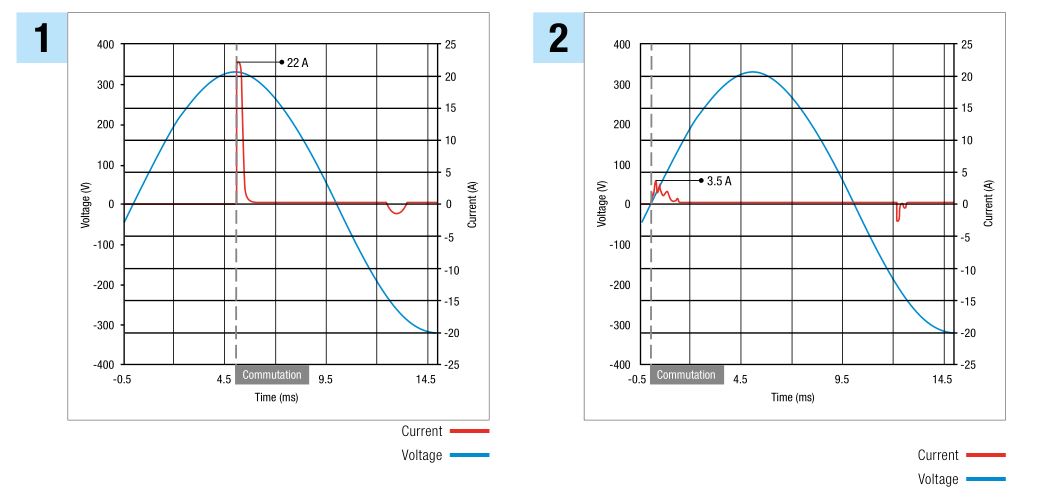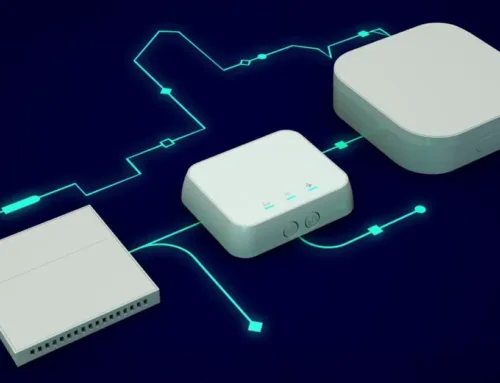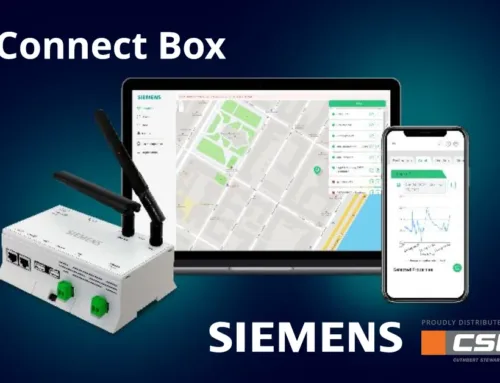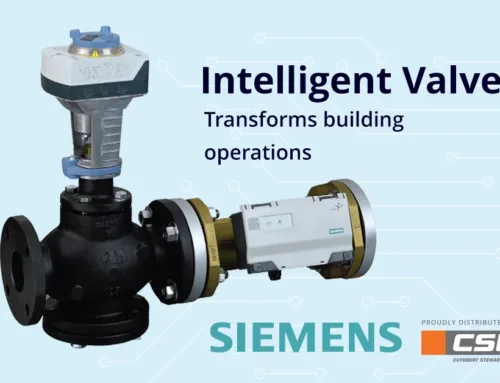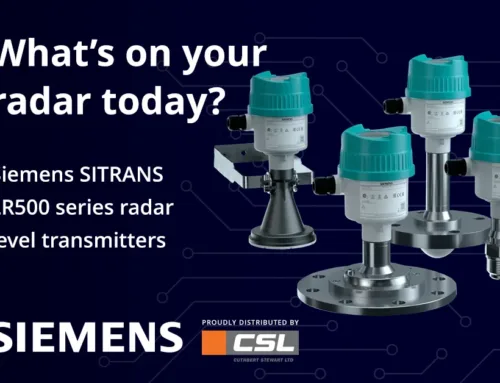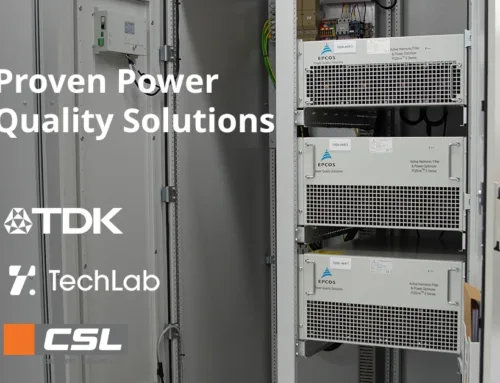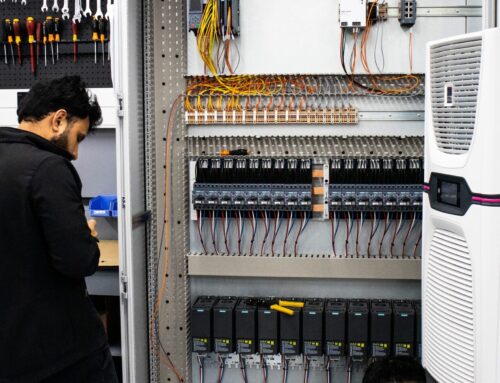Lighting technology has been changing for some years now. Traditional light bulbs are rapidly being replaced with energy-efficient light sources such as fluorescent lamps and LEDs. All of these lamps have one thing in common: they require electronic control gear (ECG). The contacts on conventional relays wear out very quickly if used for triggering these devices.
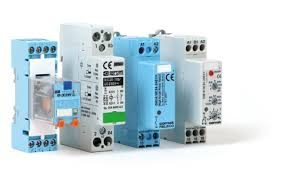 Pre-devices such as relays and contactors are placed under an increased strain when switching ECGs and energy-saving lamps with integrated ECGs. This has to be taken into consideration when planning a new system. Even when refitting the lighting technology in an existing system, the new features have to be accounted for by adapting switching components to suit the new consumers. Be aware, however, that this issue affects more than just light sources. The structure of modern switching power supplies in many devices means that this problem is also found in other areas of electronics and installation. Modern devices require a low operating current but a very high inrush current, which has to be taken into account when designing switching devices.
Pre-devices such as relays and contactors are placed under an increased strain when switching ECGs and energy-saving lamps with integrated ECGs. This has to be taken into consideration when planning a new system. Even when refitting the lighting technology in an existing system, the new features have to be accounted for by adapting switching components to suit the new consumers. Be aware, however, that this issue affects more than just light sources. The structure of modern switching power supplies in many devices means that this problem is also found in other areas of electronics and installation. Modern devices require a low operating current but a very high inrush current, which has to be taken into account when designing switching devices.
ECG inrush processes
ECGs and switching power supplies allow for the inrush current to peak at the exact point the device is switched on. High inrush currents are created by the capacitors used in ECGs after the rectifier for smoothing out the current and as an energy store. If a capacitor is entirely discharged, a charging current, similar to an electrical short, may occur during the first micro-seconds of the inrush process. Our example of an ECG for 2 × 24 W T5 fluorescent lamps shows that peak currents of more than 22 A – measured during the phase maximum – and a half-life of 305 μs may easily occur. During normal operation, this ECG absorbs a current of merely 220 mA. The inrush current is therefore 100 times higher than the nominal current in this example. The data sheets of renowned ECG manufacturers show, however, that inrush currents as high as 60 A may occur –with a lamp output of just 100 W. In daily life, complete lighting groups are most commonly switched on together, thus cumulating the effect of the high inrush current even further.
Great demand placed on relay performance
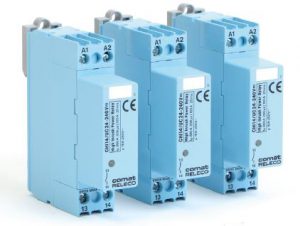 Common relay types use silver alloys such as silver-nickel (AgNi) for their contacts. They are not designed for inrush currents that are much higher than the nominal current. The thermic loads could weld the contacts shut after just a few switching-cycles. The result: the consumer can no longer be switched off. An arc is created at the point the contact blades of a relay near each other during the switching process. The contact bounce found in mechanical contacts increases this arc even further. This effect is primarily influenced by the level and half-life of the inrush current. The temperatures created during the process can easily exceed the melting point of the contact alloy, thus leading to the contact blades being welded together.
Common relay types use silver alloys such as silver-nickel (AgNi) for their contacts. They are not designed for inrush currents that are much higher than the nominal current. The thermic loads could weld the contacts shut after just a few switching-cycles. The result: the consumer can no longer be switched off. An arc is created at the point the contact blades of a relay near each other during the switching process. The contact bounce found in mechanical contacts increases this arc even further. This effect is primarily influenced by the level and half-life of the inrush current. The temperatures created during the process can easily exceed the melting point of the contact alloy, thus leading to the contact blades being welded together.
The information provided in the data sheets of relay and consumer manufacturers is a first point of reference when calculating the correct specifications of a relay. They often disclose the inrush currents and peak times. Disproportionately high inrush currents create an exceptionally high risk of welding, which is the reason why the contact material must be able to meet increased demands.
Relays for high inrush currents up to 800 A
Comat developed the high power relay CHI14 especially for inrush currents up to 800 A. The CHI14 has a tungsten (W/AgSn02) pre-contact with a higher melting point than ordinary silver alloys. This facilitates the switching of currents up to 800 A for 200 μs and 165 A for 20 ms. The switching during zero flow is another special feature of this high-tech product. This significantly reduces the inrush current. The 2 × 24 W T5 ECG is an impressive example: Fig. 1 shows a inrush current without zero flow switching of 22 A. Thanks to the zero flow switching at almost 3.5 A, the inrush current is 85 % lower in Fig. 2. With a 16 A nominal current and a DIN housing with one module width, the CHI14 is suitable for installation in distributors and upgrading existing installations. It is also ideal for use in living areas as its switching process is almost entirely noiseless. The multi-function time relay CIM14 of similar build features an additional 10 time functions such as stepping switches and automatic light switches in hallways.
The RIC series contactors have large-surface contacts that disconnect twice. Thanks to AgSn02 contacts, the RIC40 and RIC63 types can switch currents up to 150 A for 100 ms. The RAC versions with on-off function and the RBC stepping switches are also interesting options for installation. The movable relay C7-W10 is ideal for industrial applications. The tungsten (W/AgSn02) pre-contact makes it possible to handle inrush currents up to 500 A for 2.5 ms.
More Information:
Comat Releco – Relays High Inrush Datasheet
Contact Us:
Customer Support Team
Phone: 0800 288 423
Email: support@csl-online.nz

